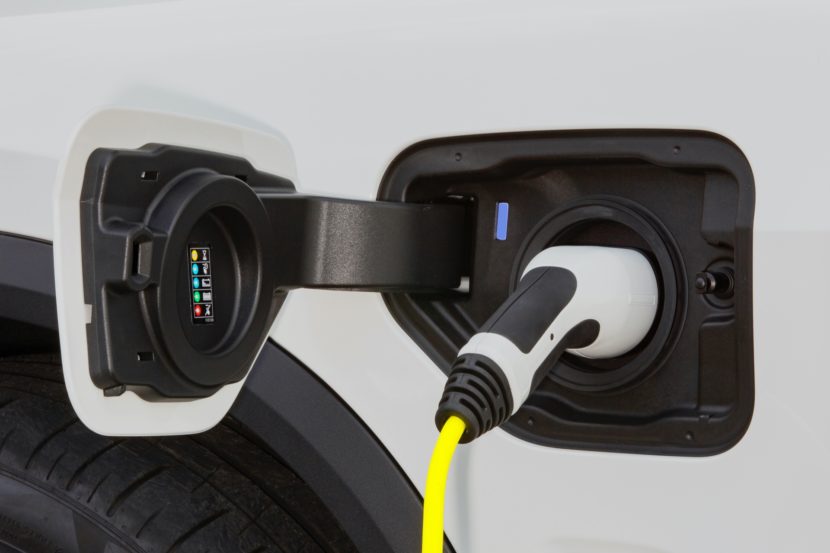Finding a plug-in hybrid SUV that actually feels luxurious and doesn’t cost a fortune is tough. Most PHEVs with premium features are $50,000 and up, while cheaper ones tend to feel basic or underpowered. But there’s one option that hits a rare balance: the BMW X5 xDrive45e. You’ll have to buy it used, but for around $34,000–$36,000, you get a proper midsize SUV with strong electric range, real performance, and the kind of interior you’d expect from a luxury brand.
Meanwhile, the Mazda CX-70 is a new entry in the same price range, starting at $$40,445 for the 3.3 Turbo Preferred. It’s positioned as an upscale SUV, but when you compare the two side by side, the BMW gives you a lot more — especially if plug-in hybrid capability matters.
Price and Market Position
According to Kelley Blue Book, you can find a clean 2021 or 2022 BMW X5 xDrive45e for as low as $34,500, depending on mileage and options. That’s the same ballpark as a brand-new CX-70, which starts around $40,000 and climbs quickly with options. Keep in mind: the BMW cost over $65,000 new. The Mazda? It’s a mid-tier trim in a mainstream lineup. They’re not playing in the same league — until you factor in the used market.
Plug-In Hybrid vs. Mild Hybrid
The BMW is a real plug-in hybrid. It uses a 3.0-liter turbocharged inline-six paired with an electric motor and a 24-kWh battery. Combined output is 389 horsepower and 443 lb-ft of torque. It can drive on electricity alone for about 30 miles on average, which covers most daily commutes. And when the battery runs out, it still returns decent fuel economy — around 50 MPGe when driven efficiently. The Mazda, on the other hand, uses a mild-hybrid system. It has a turbocharged inline-six with a 48-volt battery for light assistance, but no electric-only driving. It’s rated at 280 horsepower and 332 lb‑ft of torque, and fuel economy is closer to 25–28 mpg combined.
If you’re looking to cut gas usage or want the flexibility to drive electric around town, the BMW is in a different category entirely.
Real-World Performance
The BMW is quick. It does 0–60 in about 5.3 seconds, and the power delivery is smooth thanks to the electric boost. It’s also quiet in EV mode, and the standard all-wheel drive makes it feel stable in all conditions.
The Mazda is no slouch, but it’s not in the same league. It gets to 60 mph in the mid-6s, and while the inline-six sounds good, it doesn’t feel as refined or effortless. The BMW also offers an optional air suspension and a more advanced traction control system.
Space and Practicality
Both SUVs are similar in size. The Mazda is a little longer, but the BMW makes good use of its space. Both offer over 70 cubic feet of cargo space with the second row folded and have generous legroom for passengers. Neither one has a third row, so these are two-row-only midsize SUVs — plenty for most buyers who aren’t hauling around large families.
| Model | Length | Wheelbase | Cargo (Seats Up) | Max Cargo Volume |
|---|---|---|---|---|
| Mazda CX‑70 3.3 Turbo Preferred | 200.8 in | 122.8 in | 39.6 cu ft | 75.3 cu ft |
| BMW X5 xDrive45e | 194.3 in | 117.1 in | 33.1 cu ft | 72.3 cu ft |
Interior and Features
Even a base-spec X5 from 2021 feels expensive. Most used examples include leather seats, heated front and rear seats, panoramic roofs, Harman Kardon audio, and BMW’s iDrive 7 infotainment system with a digital gauge cluster. Materials and switchgear feel high-end throughout. The Mazda has a clean, modern cabin with a large center display, good materials, and a solid layout. It’s good — especially for a non-luxury brand — but the X5 xDrive45e has a slight edge on it.
Ownership Costs and Considerations
Buying used means you lose the new-car warranty unless you go with a Certified Pre-Owned (CPO) model. The X5 may cost more to maintain long-term, especially out of warranty. But you’re getting a $65K+ SUV for nearly half the price after just a couple of years — and with a far more advanced drivetrain.
The Mazda gives you peace of mind with a full warranty and lower maintenance costs. But it’s still a mainstream SUV, even if it’s trying to play in a more premium space.
So BMW X5 xDrive45e or Mazda CX-70?
If you’re cross-shopping midsize SUVs around $40,000, the Mazda CX-70 is worth a look. It’s new, good-looking, and decently equipped. But it’s not a plug-in, and it’s not necessarily a luxury vehicle.
The BMW X5 xDrive45e gives you both: plug-in hybrid capability and genuine luxury. It’s more powerful, more efficient (if you plug it in), and it has German engineering. You’ll have to go used, but the tradeoff is worth it for what you get.
[Photo Credit: Mazda USA Media Center]






